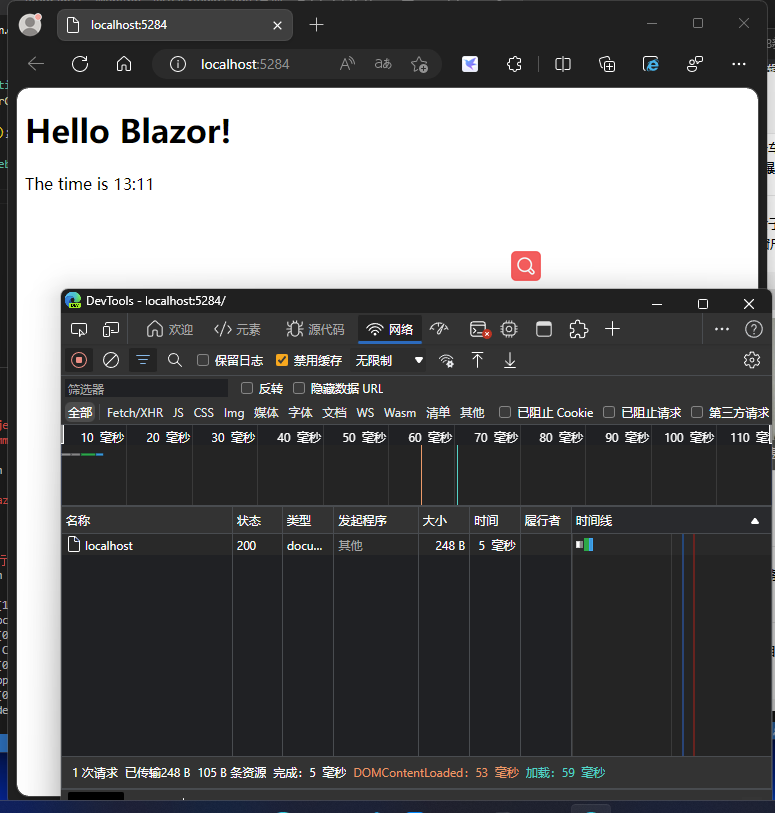开篇语
本文主要是回顾下从项目创建到生成数据到数据库(代码优先)的全部过程。采用EFCore作为ORM框架。
本次示例环境:vs2019、net5、mysql
创建项目
本次事例代码是用过vs2019创建的ASP.NET Core Web API项目
可以通过可视化界面创建或者通过命令行创建
dotnet new webapi -o Net5ByDocker
创建实体类
安装组件
<PackageReference Include="Pomelo.EntityFrameworkCore.MySql" Version="5.0.0" />
<PackageReference Include="Pomelo.EntityFrameworkCore.MySql.Json.Newtonsoft" Version="5.0.0" />
增加实体类
[Table("user")]
public class User
{
public User()
{
Id = Guid.NewGuid().ToString();
}
public User(string account, string password, string creater) : this()
{
Account = account;
Password = password;
Deleted = false;
SetCreater(creater);
}
[Key]
[Comment("主键")]
[StringLength(36)]
[Required]
public string Id { get; private set; }
[Comment("帐号")]
[StringLength(36)]
[Required]
public string Account { get; private set; }
[Comment("密码")]
[StringLength(36)]
[Required]
public string Password { get; private set; }
[Comment("余额")]
[Column(TypeName = "decimal(18, 2)")]
[Required]
public decimal Money { get; set; }
[Comment("是否删除")]
[Column(TypeName = "tinyint(1)")]
[Required]
public bool Deleted { get; private set; }
[Comment("创建人")]
[StringLength(20)]
[Required]
public string Creater { get; private set; }
[Comment("创建时间")]
[Required]
public DateTime CreateTime { get; private set; }
[Comment("修改人")]
[StringLength(20)]
[Required]
public string Modifyer { get; private set; }
[Comment("修改时间")]
[Required]
public DateTime ModifyTime { get; private set; }
public void SetCreater(string name)
{
Creater = name;
CreateTime = DateTime.Now;
SetModifyer(name);
}
public void SetModifyer(string name)
{
Modifyer = name;
ModifyTime = DateTime.Now;
}
}
这种只是增加实体类类型的一种方式,可能这种看着比较乱,还可以通过OnModelCreating实现,详情看参考文档
增加数据库上下文OpenDbContext
public class OpenDbContext : DbContext
{
public OpenDbContext(DbContextOptions<OpenDbContext> options)
: base(options)
{
}
public DbSet<User> Users { get; set; }
}
Startup注入连接数据库操作
var connection = Configuration["DbConfig:Mysql:ConnectionString"];
var migrationsAssembly = IntrospectionExtensions.GetTypeInfo(typeof(Startup)).Assembly.GetName().Name;
services.AddDbContext<OpenDbContext>(option => option.UseMySql(connection, ServerVersion.AutoDetect(connection), x =>
{
x.UseNewtonsoftJson();
x.MigrationsAssembly(migrationsAssembly);
}));
生成迁移文件
引用组件
<PackageReference Include="Microsoft.EntityFrameworkCore.Design" Version="5.0.5"> <PackageReference Include="Microsoft.EntityFrameworkCore.Tools" Version="5.0.5">
迁移命令
add-migration Init
结果

要看下生成的迁移文件是否是自己预期的那样子,也可以在这一步就生成数据库,命令:Update-Database
数据种子
增加OpenDbSend类,添加数据种子
public class OpenDbSend
{
/// <summary>
/// 生成数据库以及数据种子
/// </summary>
/// <param name="dbContext">数据库上下文</param>
/// <param name="loggerFactory">日志</param>
/// <param name="retry">重试次数</param>
/// <returns></returns>
public static async Task SeedAsync(OpenDbContext dbContext,
ILoggerFactory loggerFactory,
int? retry = 0)
{
int retryForAvailability = retry.Value;
try
{
dbContext.Database.Migrate();//如果当前数据库不存在按照当前 model 创建,如果存在则将数据库调整到和当前 model 匹配
await InitializeAsync(dbContext).ConfigureAwait(false);
//if (dbContext.Database.EnsureCreated())//如果当前数据库不存在按照当前 model创建,如果存在则不管了。
// await InitializeAsync(dbContext).ConfigureAwait(false);
}
catch (Exception ex)
{
if (retryForAvailability < 3)
{
retryForAvailability++;
var log = loggerFactory.CreateLogger<OpenDbSend>();
log.LogError(ex.Message);
await SeedAsync(dbContext, loggerFactory, retryForAvailability).ConfigureAwait(false);
}
}
}
/// <summary>
/// 初始化数据
/// </summary>
/// <param name="context"></param>
/// <returns></returns>
public static async Task InitializeAsync(OpenDbContext context)
{
if (!context.Set<User>().Any())
{
await context.Set<User>().AddAsync(new User("azrng", "123456", "azrng")).ConfigureAwait(false);
await context.Set<User>().AddAsync(new User("张三", "123456", "azrng")).ConfigureAwait(false);
}
await context.SaveChangesAsync().ConfigureAwait(false);
}
}
设置项目启动时候调用
public static async Task Main(string[] args)
{
var host = CreateHostBuilder(args).Build();
using (var scope = host.Services.CreateScope())
{
var services = scope.ServiceProvider;
var loggerFactory = services.GetRequiredService<ILoggerFactory>();
var _logger = loggerFactory.CreateLogger<Program>();
try
{
var openContext = services.GetRequiredService<OpenDbContext>();
await OpenDbSend.SeedAsync(openContext, loggerFactory).ConfigureAwait(false);
}
catch (Exception ex)
{
_logger.LogError(ex, $"项目启动出错 {ex.Message}");
}
}
await host.RunAsync().ConfigureAwait(false);
}
生成数据库
启动项目,自动生成数据库

表结构如下

如果后期数据库字段或者结构有变动,可以再次生成迁移文件然后生成数据库
查询数据
/// <summary>
/// 用户接口
/// </summary>
public interface IUserService
{
string GetName();
/// <summary>
/// 查询用户信息
/// </summary>
/// <param name="account"></param>
/// <returns></returns>
Task<User> GetDetailsAsync(string account);
}
/// <summary>
/// 用户实现
/// </summary>
public class UserService : IUserService
{
private readonly OpenDbContext _dbContext;
public UserService(OpenDbContext dbContext)
{
_dbContext = dbContext;
}
public string GetName()
{
return "AZRNG";
}
///<inheritdoc cref="IUserService.GetDetailsAsync(string)"/>
public async Task<User> GetDetailsAsync(string account)
{
return await _dbContext.Set<User>().FirstOrDefaultAsync(t => t.Account == account).ConfigureAwait(false);
}
}
一般更推荐建立指定的返回Model类,然后只查询需要的内容,不直接返回实体类
控制器方法
/// <summary>
/// 查询用户详情
/// </summary>
/// <param name="account"></param>
/// <returns></returns>
[HttpGet]
public async Task<ActionResult<User>> GetDetailsAsync(string account)
{
return await _userService.GetDetailsAsync(account).ConfigureAwait(false);
}
查询结果
{
"id": "e8976d0a-6ee9-4e2e-b8d8-1fe6e85b727b",
"account": "azrng",
"password": "123456",
"money": 0,
"deleted": false,
"creater": "azrng",
"createTime": "2021-05-09T15:48:45.730302",
"modifyer": "azrng",
"modifyTime": "2021-05-09T15:48:45.730425"
}
参考文档
实体类型:https://docs.microsoft.com/zh-cn/ef/core/modeling/entity-types?tabs=data-annotations
到此这篇关于.NET之生成数据库全流程实现的文章就介绍到这了,更多相关.NET 生成数据库内容请搜索阿兔在线工具以前的文章或继续浏览下面的相关文章希望大家以后多多支持阿兔在线工具!




